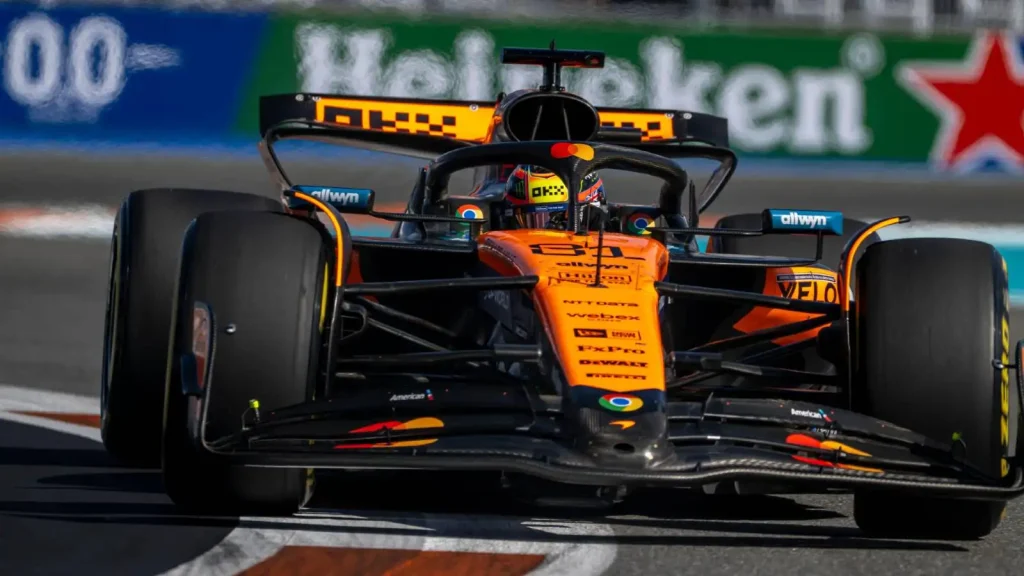The FIA conducted a detailed examination of McLaren’s MCL39 rear brakes following the Grand Prix, diverging from the standard post-race checks.
In addition to the typical scrutineering after every race, one car from the top 10 is subjected to thorough inspections by the FIA’s technical delegate, Jo Bauer.
McLaren’s Brake System Under Scrutiny After Miami GP
For example, at Jeddah, Max Verstappen’s Red Bull was randomly selected for an inspection involving its engine air intake, oil and coolant systems, as well as related sensors and ECU connections.
After the Miami Grand Prix, it was noted that the FIA selected McLaren’s MCL39 for additional scrutiny beyond the usual post-race evaluations. It remains unclear whether Lando Norris or Oscar Piastri’s car was inspected.
Reasons Behind the Inspection
The FIA reportedly focused on McLaren’s rear braking system, an area of particular interest to rival teams due to McLaren’s adeptness in managing tire temperatures, which has puzzled competitors.
The criteria for such specific inspections by the FIA seem to be based on either their own interests, indications of a team’s performance improvement, or information from competing teams, though the exact reason for selecting McLaren’s brakes this time is not specified.
Awaiting Inspection Results
While the FIA’s inspection findings have yet to be disclosed, they are expected to be announced on Wednesday prior to the Emilia Romagna Grand Prix. However, since no issues were reported to the stewards, it is reasonable to conclude that the inspection did not reveal any regulatory violations.
Concerns Raised by Rival Teams
There have been claims from rival teams concerning McLaren’s apparent advantage in rear brake cooling, crucial for maintaining tire temperatures. Reports suggest that Red Bull submitted thermal imaging evidence to the FIA indicating that McLaren’s brake temperatures were significantly lower compared to others.
Praise for McLaren’s Engineering
After McLaren’s dominant 1-2 finish in Miami, team principal Andrea Stella emphasized the engineering that has propelled McLaren to an early lead in the championships. He highlighted the car’s ability to manage tire overheating effectively, which he attributes to a comprehensive understanding of the various factors influencing tire behavior.
Stella commended the team’s engineers for their innovative approaches and their success in navigating the complex nature of tire management in Formula One, noting that the quality of McLaren’s cooling system design also plays a significant role in the car’s performance, particularly in hot conditions.



